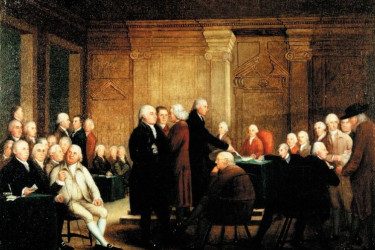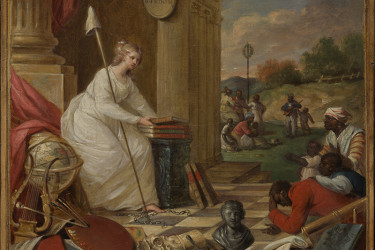It’s plainly important to Taylor that his books stand as accounts of all the blood we’ve let seep through the cracks. Historical ignorance and denial obviously aren’t exclusive to the United States. But outsiders have long found American self-regard in the face of uncomfortable realities extraordinary. “Newspapers, politicians, and orators praised fellow Americans as ‘the greatest people under the canopy of heaven’ and expected confirmation from European visitors,” Taylor writes of the early republic. “A Briton reported that Americans had ‘a restless and insatiable appetite for praise, which defied all restraint of reason or common sense.’ Another traveler thought that they practiced ‘the self-deception of believing that they really are that which they only wish to be.’”
That habit of self-deception can imbue the reading of work like Taylor’s with the thrill of accessing illicit knowledge. And one of the most subversive and challenging ideas all good works of history offer is a sense that history can also move backward. In American Colonies, Taylor takes a moment to describe the initial racial order in Virginia, where Black slaves were, at first, allowed to accumulate enough property to purchase their freedom and go into planting themselves. “Because the colonial laws did not yet forbid black progress, the black freedmen and women could move as they pleased, baptize their children, procure firearms, testify in court, buy and sell property, and even vote,” he writes. “Some black men married white women, which was especially remarkable given their scarcity and high demand as wives for white men. A few black women took white husbands.”
All this collapsed when population growth among slaves allowed the preservation of African cultural practices, and laws that codified racial differences were introduced, obscuring white class distinctions under the shroud of white racial solidarity and rendering “white Virginians indifferent to the continuing concentration of most property and real power in the hands of the planter elite.” Similarly, in American Republics, Taylor notes that the early years of the American republic, which saw slavery collapse in the North, also saw attempts to constrain or roll back the rights of free Blacks who “lost the vote in Connecticut, Maryland, New Jersey, New York, North Carolina, Pennsylvania, Rhode Island, and Tennessee between 1806 and 1838.”
Reversals like this don’t jibe well with the way most of us are taught to understand our history—through strictly forward-moving narratives that often presuppose an astounding moral ignorance on the part of our forebears. The Founders, the preferred story goes, were radical, earthshaking visionaries strangely blind to or powerless against injustices that now strike us as obvious. The evils of slavery and Native dispossession, we imply to ourselves, had to be discovered like gravity or the atom—true human equality was an idea whose time had simply not yet come. But Taylor’s work highlights figures who, while flawed and decidedly less than fully egalitarian, were clearly more ready for it than others—from Bartolomé de las Casas and other early critics of the treatment of Natives by Spanish conquistadores to more familiar figures like Benjamin Franklin, a former slave owner himself, who submitted a petition to Congress in 1790 urging not only an end to the slave trade but the formation of a plan “to extend liberty ‘without distinction of color, to all descriptions of people.’”






















